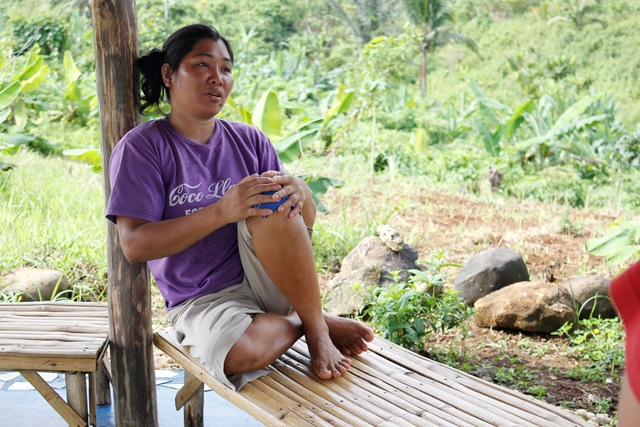Get to know GK Liwayway, their hopes and dreams, and the challenges they're trying to overcome day by day.
Get to know GK Liwayway, their hopes and dreams, and the challenges they're trying to overcome day by day.
Note: Some of the interviews conducted in Filipino were translated into English.
“Don’t you get scared?” we ask as the slightly-built man (fittingly called Payat) deftly ties the container to the coconut flower with a slim yet sturdy coconut leaf, his feet dangling a good sixty feet off the ground. “I’ve watched my father do this since I was young,” he briefly responds, and then without hesitation, he steps on a long bamboo shoot acting as a vertigo-inducing pathway, and he nimbly makes his way towards the next coconut tree.
Punctuated with these towering trees and their bamboo bridges, a beautiful blue wraps the skyline that falls on fleeting yet mesmerizing pockets of the Pacific Ocean. This is the warm welcome that greets the residents of Mauban, Quezon every day. And perched within this quaint town is the small community of Gawad Kalinga (GK) Liwayway.
Getting to Know GK Liwayway
Home to around 40 families, the bright, colorful houses and the quiet lull of the community fit perfectly with the backdrop of pale blue sky and magnificent mountains. GK Liwayway's pangulo Charitto Buela, or simply called Ate Chatto, helps us in getting to know more about the people.
"We get whatever work we can," she shares, explaining the difficulty of the people to have a permanent job. For the residents of GK Liwayway, the most common livelihood is planting root crops like cassava and sweet potatoes, as well as bananas and pineapples on vacant land in and near the village ("We don't own any of that land," she quickly explains). The men especially are always on the lookout for construction work and can often be found fishing in the nearby river to catch their daily meals.

Ate Chatto herself and the rest of her family get their income mainly from woodwork projects or commonly called by residents as pukpukin. Usually, she'll work on making miniature nipa huts and selling them to a middle man for fifteen pesos apiece.
As the source of livelihood for the people of GK Liwayway is more or less dependent on factors such as climate, availability of crops, middlemen and short-term contracts, it is difficult for them to be financially secure – to have the peace of mind of knowing where the family's next meal will come from.
When Hope and Uncertainty Mix

GK Liwayway’s bright houses pop out like colorful confetti against the mountainous backdrop.
Stemming from the general lack of employment of the residents, ate Chatto reveals another concern of the community. "At first, the bayanihan while building the houses felt really good," she starts, sharing from her own experience when she became part of the GK community over a year ago. "But of course, there will be misunderstandings among the people. If sisters who have lived together for almost all their lives get into misunderstandings, what more for people who come from different barangays and speak different languages suddenly becoming neighbors?"
Faced with this rampant problem, Ate Chatto admits that even after eight months of being the community leader, she still feels she's standing on shaky ground. "If I'm just a follower, that's okay with me. But when I'm the one asking people to follow me, I think that's the hardest thing that I ever had to do in my life."
But despite the difficulties (and the quick confession that she didn't want the position at first) it's evident that Ate Chatto isn't about to compromise on any of her responsibilities as pangulo. She tells of her visit to the Gawad Kalinga Enchanted Farm in Angat, Bulacan for this year's GK Expo: "The place was beautiful," she says with awe and respect, and it's clear the experience has given her a more distinct dream for GK Liwayway.
"My number one priority for the community is having stable jobs," she firmly declares, targeting the root of restlessness that frequently overshadows the residents. When asked how she plans to achieve that, uncertainty peeked through. "I don't know. To be honest, I don't even know how I am going to get a stable job."
And this is how Frank Regis, fondly called "Tito Frank" by friends and colleagues, found the community back in 2013 when he first laid out his plans for Dr. Gerry's Coco Nectar's plantation. But instead of apprehension, he felt energized and inspired for he saw overflowing opportunity to do good for more.
Find out the next chapter to this budding story of bayanihan and friendship next week as we explore more about Tito Frank's social enterprise and how the simple act of reaching out to make a dream come true together has opened so many doors for GK Liwayway!




